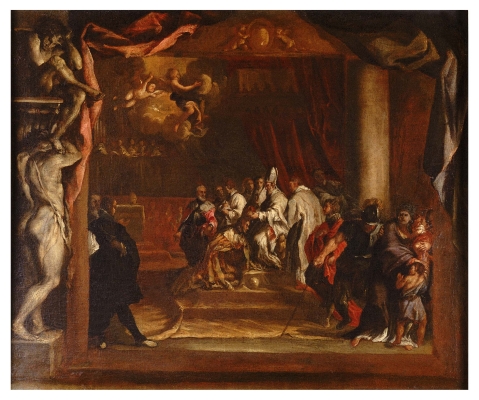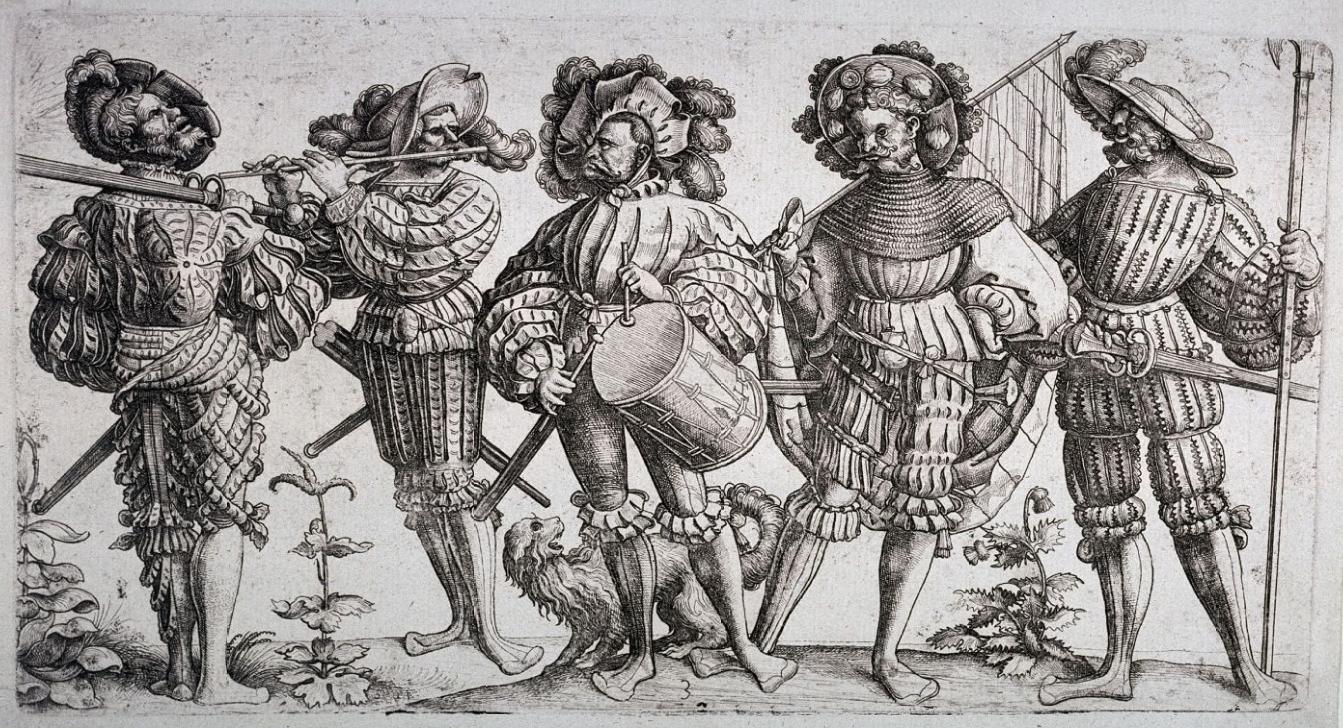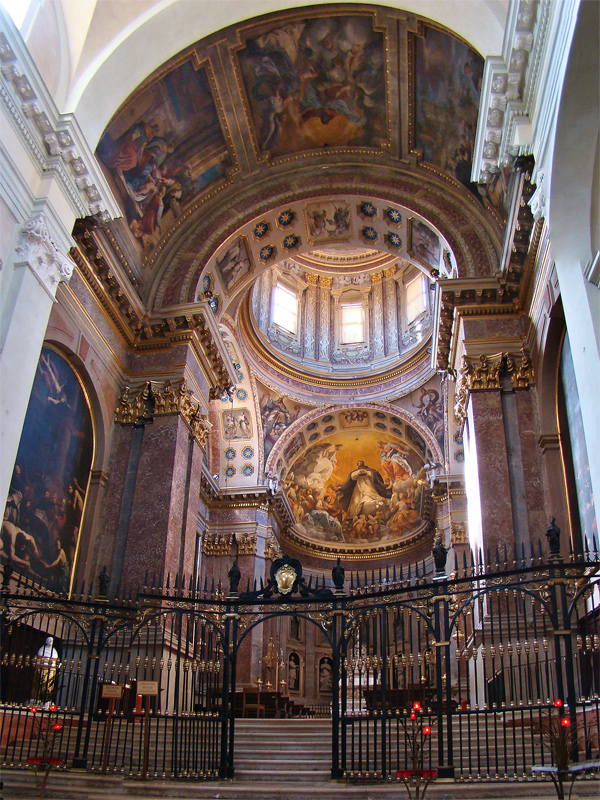|
Coronation Of Charles V
Charles V was crowned Holy Roman Emperor by Pope Clement VII in the San Petronio Basilica in Bologna on 24 February 1530. He was the last Holy Roman Emperor to be crowned by a pope. Context for the coronation Pope Clement VII Medici and Charles V agreed to the imperial coronation as a means to heal the political and religious conflicts that had divided the Italian and European world and to reach a "universal peace" in the Christian West that would ensure a more effective defence against Turkish aggression which had reached the doors of Vienna in 1529. Preparations for the meeting between the two sovereigns encountered difficulties and delays due to the Pope's skepticism of Charles V's proposals. One concern, among others, was the location of this meeting. Pope Clement VII preferred Rome but Charles V chose instead Bologna, given that many Romans blamed Charles for the Sack of Rome (1527), which was carried out by his mutinous troops. This moment of extreme conflict between Pap ... [...More Info...] [...Related Items...] OR: [Wikipedia] [Google] [Baidu] |
Landsknecht
The (singular: , ), also rendered as Landsknechts or Lansquenets, were Germanic mercenaries used in pike and shot formations during the early modern period. Consisting predominantly of pikemen and supporting foot soldiers, their front line was formed by ''Doppelsöldner'' ("double-pay men") renowned for their use of ''Zweihänder'' and arquebus. Originally organized by Emperor Maximilian I and Georg von Frundsberg, they formed the bulk of the Holy Roman Empire's Imperial Army from the late 1400s to the early 1600s, fighting in the Habsburg-Valois wars, the Habsburg-Ottoman wars, and the European wars of religion. Although prone to mutiny if unpaid and divided within their ranks between Catholics and Lutherans, the ''Landsknechte'' were well-armed, experienced, and fierce warriors. In addition, they were recruitable in large numbers throughout Germany and Austria by the Holy Roman Emperor and thus guaranteed both quantity and quality to the Imperial military for a century a ... [...More Info...] [...Related Items...] OR: [Wikipedia] [Google] [Baidu] |
Holy Roman Emperor
The Holy Roman Emperor, originally and officially the Emperor of the Romans ( la, Imperator Romanorum, german: Kaiser der Römer) during the Middle Ages, and also known as the Roman-German Emperor since the early modern period ( la, Imperator Germanorum, german: Römisch-deutscher Kaiser, lit, Roman-German emperor), was the ruler and head of state of the Holy Roman Empire. The title was held in conjunction with the title of king of Italy (''Rex Italiae'') from the 8th to the 16th century, and, almost without interruption, with the title of king of Germany (''Rex Teutonicorum'', lit. "King of the Teutons") throughout the 12th to 18th centuries. The Holy Roman Emperor title provided the highest prestige among medieval Roman Catholic monarchs, because the empire was considered by the Roman Catholic Church to be the only successor of the Roman Empire during the Middle Ages and the early modern period. Thus, in theory and diplomacy, the emperors were considered '' primus inter ... [...More Info...] [...Related Items...] OR: [Wikipedia] [Google] [Baidu] |
Coronation Of The Holy Roman Emperor
The Coronation of the Holy Roman Emperor was a ceremony in which the ruler of Western Europe's then-largest political entity received the Imperial Regalia from the hands of the Pope, symbolizing both the pope's right to crown Christian sovereigns and also the emperor's role as protector of the Roman Catholic Church. The Holy Roman Empresses were crowned as well. The Holy Roman Empire was established in the year 800 under Charlemagne. Later emperors were crowned by the pope or other Catholic bishops. Charles V became the last Holy Roman Emperor to be crowned by a pope: Clement VII in Bologna in 1530. Thereafter, until the abolition of the empire in 1806, no further crownings by the Pope were held.See also Guy Stair SaintyThe Holy Roman Empire: Introduction. From thAlmanach de la Courwebsite. Retrieved on 14 September 2008. Later rulers simply proclaimed themselves ''Imperator Electus Romanorum'' or "Elected Emperor of the Romans" after their election by the princes and coronation as ... [...More Info...] [...Related Items...] OR: [Wikipedia] [Google] [Baidu] |
Francesco Maria I Della Rovere
Francesco Maria I della Rovere (25 March 1490 – 20 October 1538) was an Italian condottiero, who was Duke of Urbino from 1508 to 1516 and, after retaking the throne from Lorenzo II de' Medici, from 1521 to 1538. Biography He was born in Senigallia, the son of the Papal captain and lord of that city, Giovanni della Rovere, and of Giovanna da Montefeltro, daughter of Federico III da Montefeltro. He was also the nephew of Giuliano della Rovere, Pope Julius II. His uncle Guidobaldo I of Urbino, who was heirless, called him at his court, and named him as heir of that dukedom in 1504 through the intercession of Julius II. In 1502 the della Rovere had lost the seigniory of Senigallia, occupied by Cesare Borgia, then the most powerful figure in the Marche: Francesco Maria and his mother were saved from the slaughter perpetrated by Borgia's troops by the then-land soldier Andrea Doria. When in 1508 Guidobaldo died, Francesco Maria became duke of Urbino; thanks to the suppo ... [...More Info...] [...Related Items...] OR: [Wikipedia] [Google] [Baidu] |
Faldstool
Faldstool (from the O.H. Ger. ''falden'' or ''falten'', "to fold," and ''stuol'', Mod. Ger. ''Stuhl'', "stool"; from the medieval Latin ''faldistolium'' derived, through the old form ''fauesteuil'', from the Mod. Fr. ''fauteuil'') is a portable folding chair, used by a bishop when not occupying the throne in his own cathedral, or when officiating in a cathedral or church other than his own; hence any movable folding stool used during divine service. Whatever the origins, it is difficult not to note the general resemblance to the curule chair or ''sella curulis'', which according to Livy supposedly derived its name from ''currus'', "chariot", and like the Roman toga originated in Etruria, but much earlier stools supported on a cross-frame are known from the New Kingdom of Egypt. Just as a campstool of similar form came to be used by military commanders in the field, so it became the ceremonial chair that accompanied the bishop in his official visitations. The bishop will ... [...More Info...] [...Related Items...] OR: [Wikipedia] [Google] [Baidu] |
Basilica Of San Domenico
The Basilica of San Domenico is one of the major churches in Bologna, Italy. The remains of Saint Dominic, founder of the Order of Preachers ( Dominicans), are buried inside the exquisite shrine Arca di San Domenico, made by Nicola Pisano and his workshop, Arnolfo di Cambio and with later additions by Niccolò dell'Arca and the young Michelangelo. History Dominic Guzman, on arriving in Bologna in January 1218, was impressed by the vitality of the city and quickly recognized the importance of this university town to his evangelizing mission. A convent was established at the Mascarella church by the Blessed Reginald of Orleans. As this convent soon became too small for their increasing number, the preaching Brothers moved in 1219 to the small church of San Nicolò of the Vineyards at the outskirts of Bologna. St. Dominic settled in this church and held here the first two General Chapters of the order (1220 and 1221). Saint Dominic died in this church on 6 August 1221. He was bu ... [...More Info...] [...Related Items...] OR: [Wikipedia] [Google] [Baidu] |
Toledo 027
Toledo most commonly refers to: * Toledo, Spain, a city in Spain * Province of Toledo, Spain * Toledo, Ohio, a city in the United States Toledo may also refer to: Places Belize * Toledo District * Toledo Settlement Bolivia * Toledo, Oruro Brazil * Toledo, Minas Gerais * Toledo, Paraná Colombia * Toledo, Norte de Santander * Toledo, Antioquia Philippines * Toledo, Cebu Spain * Taifa of Toledo (1010–1085) * Kingdom of Toledo (1085–1833) * Province of Toledo, Spain * Roman Catholic Archdiocese of Toledo * Toledo (Congress of Deputies constituency) United States * Toledo, Georgia, an unincorporated community * Toledo, Illinois, a village * Toledo, Iowa, a city * Toledo, Kansas, an unincorporated community * Toledo, Callaway County, Missouri, an unincorporated community * Toledo, Ohio, a city * Toledo, Ozark County, Missouri, an unincorporated community * Toledo, Oregon, a city * Toledo, Washington, a city * Toledo, Texas, an unincorporated community ... [...More Info...] [...Related Items...] OR: [Wikipedia] [Google] [Baidu] |
Antonio De Leyva
Antonio de Leyva, Duke of Terranova, Prince of Ascoli, Count of Monza (1480–1536) was a Spanish general during the Italian Wars. During the Italian War of 1521, he commanded Pavia during the siege of the city by Francis I of France, and took part in the Battle of Pavia in 1525. After the death of Fernando d'Ávalos, Marquis of Pescara, he held further commands in Italy during the War of the League of Cognac and finally died shortly after attempting an invasion of Provence. Biography Belonging to a family from Navarre he made his military debut in the Alpujarras (1502) during the struggle against the revolting Mudéjares from Granada and later served in Italy under the '' Gran Capitán'' (1503–1504). He had a prominent part in the Italian Wars and was wounded at the battle of Ravenna (1512). Later on, under the Marquis of Pescara, he fought near Milan and in the unlucky campaign of Provence in 1524. After this failure he had the post of commander of the garrison of Pavi ... [...More Info...] [...Related Items...] OR: [Wikipedia] [Google] [Baidu] |
Piazza Maggiore
Piazza Maggiore (''Piâza Mażåur'' in the Bolognese language) is a central square in Bologna, region of Emilia-Romagna, Italy. The appearance in the 21st century, generally reflects the layout from the 15th century. The Northwest corner opens into Piazza del Nettuno with its Fontana del Nettuno, while the Northeast corner opens into the narrower Piazza Re Enzo, running along the flanks of the Palazzo Re Enzo that merges with the Palazzo del Podestà. Flanking the Piazza del Nettuno is the Biblioteca Salaborsa. Layout The square is surrounded by major administrative and religious buildings in the history of Bologna, including: *Palazzo d'Accursio (W) - former city hall, now museum *Palazzo dei Notai (SW) - former notaries' guild *Basilica of San Petronio (SE) - Duomo of Bologna *Palazzo dei Banchi (E)- former banking center *Palazzo del Podestà, Bologna The Palazzo del Podestà is a civic building in Bologna, northern Italy. The edifice was built around 1200 as the seat ... [...More Info...] [...Related Items...] OR: [Wikipedia] [Google] [Baidu] |
Giovanni Bernardi, Coronation Medal Of Charles V, 1500-1558, King Of Spain 1516, Holy Roman Emperor 1519-1556, 1530, NGA 44972
Giovanni may refer to: * Giovanni (name), an Italian male given name and surname * Giovanni (meteorology), a Web interface for users to analyze NASA's gridded data * ''Don Giovanni'', a 1787 opera by Wolfgang Amadeus Mozart, based on the legend of Don Juan * Giovanni (Pokémon), boss of Team Rocket in the fictional world of Pokémon * Giovanni (World of Darkness), a group of vampires in ''Vampire: The Masquerade/World of Darkness'' roleplay and video game * "Giovanni", a song by Band-Maid from the 2021 album ''Unseen World'' * ''Giovanni's Island'', a 2014 Japanese anime drama film * ''Giovanni's Room'', a 1956 novel by James Baldwin * Via Giovanni, places in Rome See also * * *Geovani *Giovanni Battista *San Giovanni (other) San Giovanni, the Italian form of "Saint John", is a name that may refer to dozens of saints. It may also refer to several places (most of them in Italy) and religious buildings: Places France *San-Giovanni-di-Moriani, a municipality of the Hau . ... [...More Info...] [...Related Items...] OR: [Wikipedia] [Google] [Baidu] |






